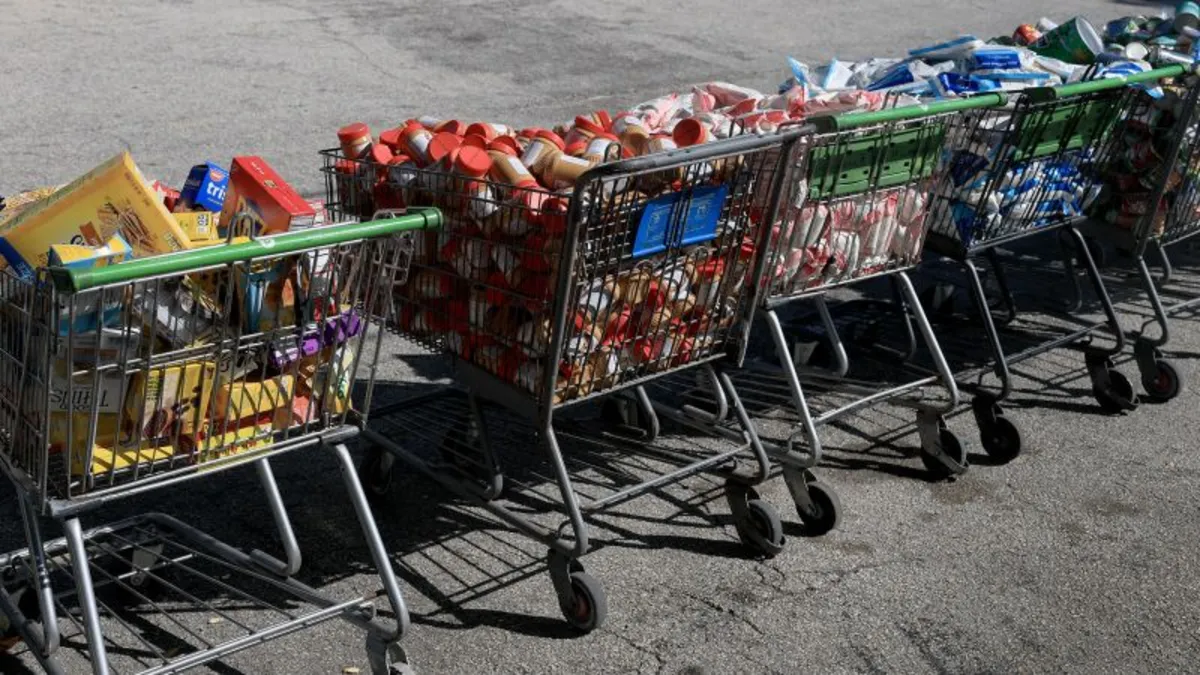
As the government shutdown continues, many families across the United States are feeling the financial strain. Annemarie King from Cincinnati is one such example. With her husband, Randall, taking on extra shifts at the drywall factory, the couple is preparing for the end of their food stamp benefits this November. The Kings, who have eight young children, rely heavily on the approximately $1,000 they receive monthly through the Supplemental Nutrition Assistance Program (SNAP) to keep their refrigerator stocked with essential items like fresh fruits, vegetables, and meat.
In mid-October, the U.S. Department of Agriculture announced that due to the ongoing government shutdown, there would be no funding available for November's food stamp benefits. This announcement has left families like the Kings scrambling for alternatives. Annemarie, a stay-at-home mom, has started purchasing more canned and boxed foods, preparing less nutritious meals, and even skipping meals herself to ensure her children have enough to eat. “I feel guilty eating a meal,” she confessed. “I don’t want to take food away from them.”
The ramifications of the government shutdown extend beyond just the Kings’ family. As the shutdown nears the one-month mark, it is not only furloughed federal workers who are feeling the impact. Low-income households across the nation are set to lose access to critical social safety net programs. Beginning November 1, over 65,000 children and families could be cut off from Head Start programs, which provide essential early education and child development resources, according to the National Head Start Association.
The closure of these programs could force some parents to quit their jobs due to the lack of childcare. Additionally, many families are concerned about losing heating assistance from the Low Income Home Energy Assistance Program (LIHEAP) just as winter approaches. An estimated 24 million Americans who rely on health insurance through the Affordable Care Act are also bracing for anticipated increases in premiums next year.
As federal funding for low-income families begins to dry up, food banks and charities are preparing for a surge in demand. They anticipate millions will face increasingly desperate situations without the programs they depend on. Annemarie King noted that instead of her usual meals of chicken and fresh vegetables, she’s now cooking simpler meals like chicken with canned green beans, due to the lack of resources. She lamented, “Our family is suffering because neither side will compromise.”
In Hillsboro, Ohio, the closure of the local Head Start program means Lauren Lowe, a 42-year-old restaurant server, may have to leave her job. With her 4-year-old son, Carter, attending Head Start, both parents could work full-time. Now, with the program ending, Lowe is left to decide between staying home to care for her child or continuing to work, all while navigating their loss of food stamp benefits. “It’s really scary because, how do we make ends meet?” she expressed.
Meanwhile, the suspension of funding for LIHEAP is creating hazardous situations in rural areas like Oregon. Sheri Gutierrez, the energy program manager at the Community Action Program of East Central Oregon, highlighted that many clients heat their homes with propane and wood, which do not have the same protections as electric or natural gas heating. “LIHEAP is lifesaving. Without heat, they won’t survive,” she stated.
In Lakeville, Minnesota, Ronda Beck is anxiously waiting for help from LIHEAP to cover her electric bill. With limited income, she is considering relying on local food pantries, but is terrified that she won’t receive enough food if her food stamps are cut. “I don’t want to go hungry,” Beck said, reflecting the anxiety many families are experiencing as they face uncertain futures.
As the government shutdown continues, the effects on low-income families are becoming increasingly dire. With essential programs like SNAP and Head Start in jeopardy, families are left scrambling for solutions. Community organizations are bracing for increased demand, but they can only offer a fraction of what federal assistance typically provides. The ongoing stalemate on Capitol Hill has left millions of Americans concerned about their next meal and how they will keep a roof over their heads.